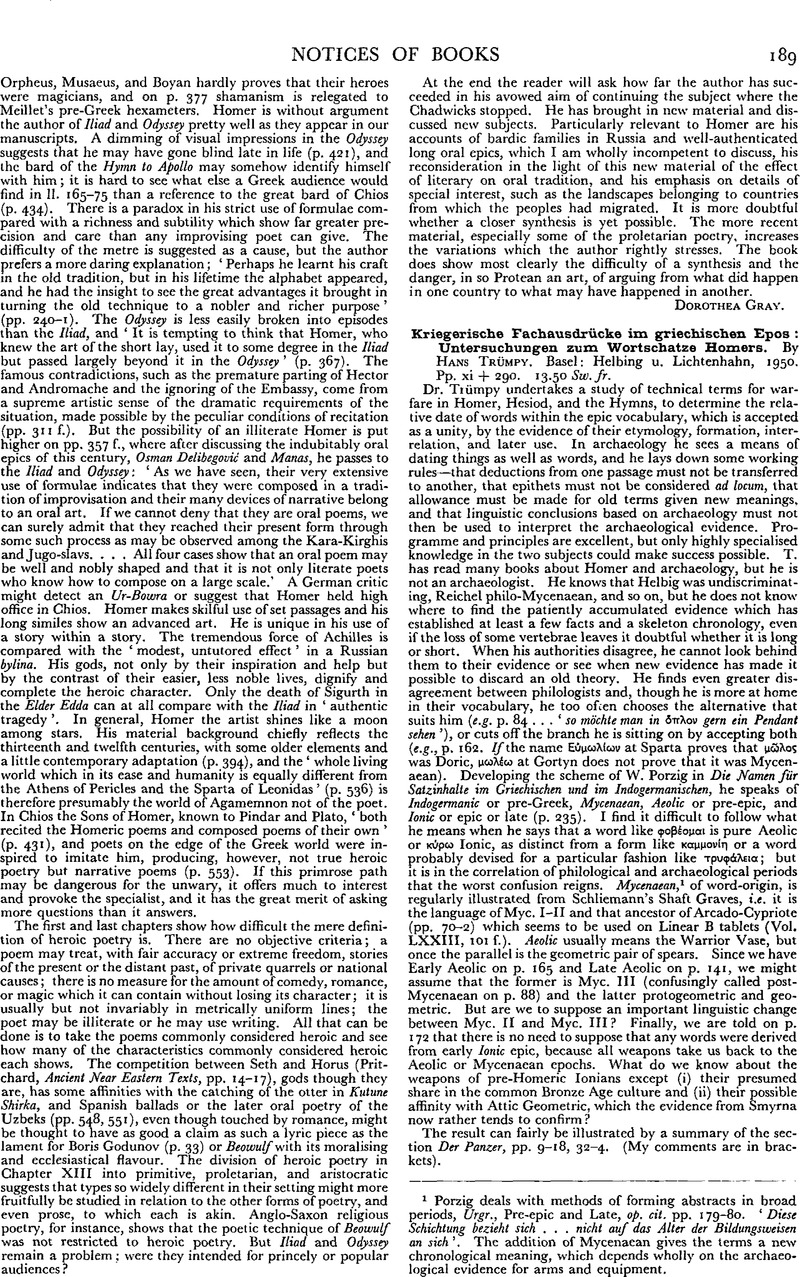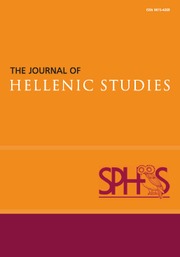No CrossRef data available.
Article contents
Kriegerische Fachausdrücke im griechischen Epos: Untersuchungen zum Wortschatze Homers. By Hans Trümpy. Basel: Helbing u. Lichtenhahn, 1950. Pp. xi + 290, 13.50 Sw. fr.
Review products
Published online by Cambridge University Press: 23 December 2013
Abstract

- Type
- Notices of Books
- Information
- Copyright
- Copyright © The Society for the Promotion of Hellenic Studies 1954
References
page 189 note 1 Porzig deals with methods of forming abstracts in broad periods, Urgr., Pre-epic and Late, op. cit. pp. 179–80. ‘Diese Schichtung bezieht sich … nicht auf das Alter der Bildungsweisen an sich’. The addition of Mycenaean gives the terms a new chronological meaning, which depends wholly on the archaeological evidence for arms and equipment.
page 190 note 1 His references should be confirmed. See e.g., p. 19, ‘Enkomi (Kreta)’ though Kunze mentions Cyprus; p. 62, ‘Nach Leaf, Bd. I. 584. 3 sind Schwertgriffe mit schwarzem Muster aus Mykene bekannt’. Leaf says that Tsountas reported handle-decoration ‘which seems to suggest thongs’ and conjectured from it an original use of thongs which grew black with sweat. These are small examples of many misstatements. Other mis understandings are more comprehensible, e.g. on p. 16 he confuses Nilsson's seventh-century hoplite corslets with Hagemann's sixth-century leather corslets (Pfuhl, , MuZ III, no. 117, 140Google Scholar), and on p. 65 he is misled by the inlaid daggers into thinking that Myc. I–II swords were for show, not use. Conflations such as the explanation of Agamemnon's corslet as both Orientalising (Poulsen and Nilsson) and Cypriote metalwork of eleventh-tenth century (Wiesner) are unhappy. The connexions on pp. 33 and 51 should be corrected to the relative frequency of ἀσπίς and σάκοΐ, giving θώρηξ-ἀσπί;: θώρηξ-σάκος = 9½: 7, surprisingly close, since Aias never has a θώρηξ, and κορύς-ἀσπίσ: κορиύς-σάκος = 8½: 8, which is clearly not worth mentioning.
2 I could find better arguments to ‘prove’ that μάχῃ ἔνι κυδιανείρῃ is a survival from Mycenaean sporting duels, in process of replacement by an age which took its wars more grimly; but no one expects ‘epic economy’ to be absolute.


